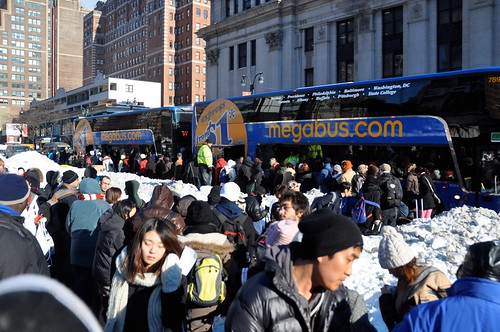A quick look at some of the things that make intercity bus travel work (or not):

With the launching "Megabus", intercity bus travel is no longer confined to seedy bus depots and is actually no longer considered a last resort travel option. It's popularity has skyrocketed - esp amongst young adults. Image by flickr user Shreyans Bhansali.
Fastest growing form of intercity travel: Buses
Number of intercity bus trips in 1960: 140 million
% decrease in intercity bus service between 1980-2002: 50.6%
“Curbside” bus carrier – Megabus – inauguration date: 2006
First time in 40 years intercity bus travel grew: 2007
Percentage of Megabus riders between age of 18-34: 50%
Median annual income for male workers aged 25-34 in 1980: $46,700
Percentage more average wage worker earned in 1970 than today: 18%
Percentage of riders booking their Megabus tickets online: 90%
Cost per mile of Megabus ride: $0.08
Percentage increase in ridership in 2010: 48%
Airline industry ridership increase: 5%
Number of gallons of fuel reduced due to curbside bus carriers: 11 million
Equivalent: 24,000 cars off the road
Curbside bus passenger miles travelled per gallon of fuel burned: 196
Carbon emissions reduced: 242 million pounds
